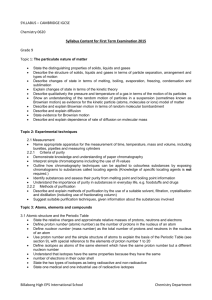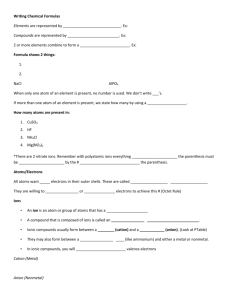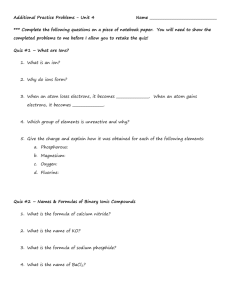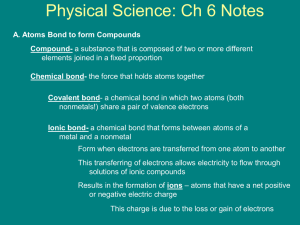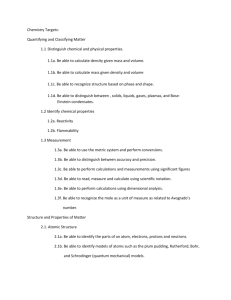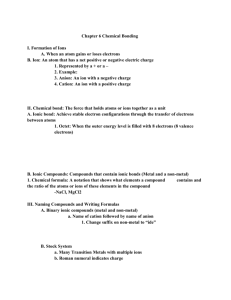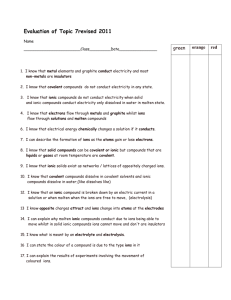Chemistry Study Guide: Atoms, Bonding, Reactions
advertisement
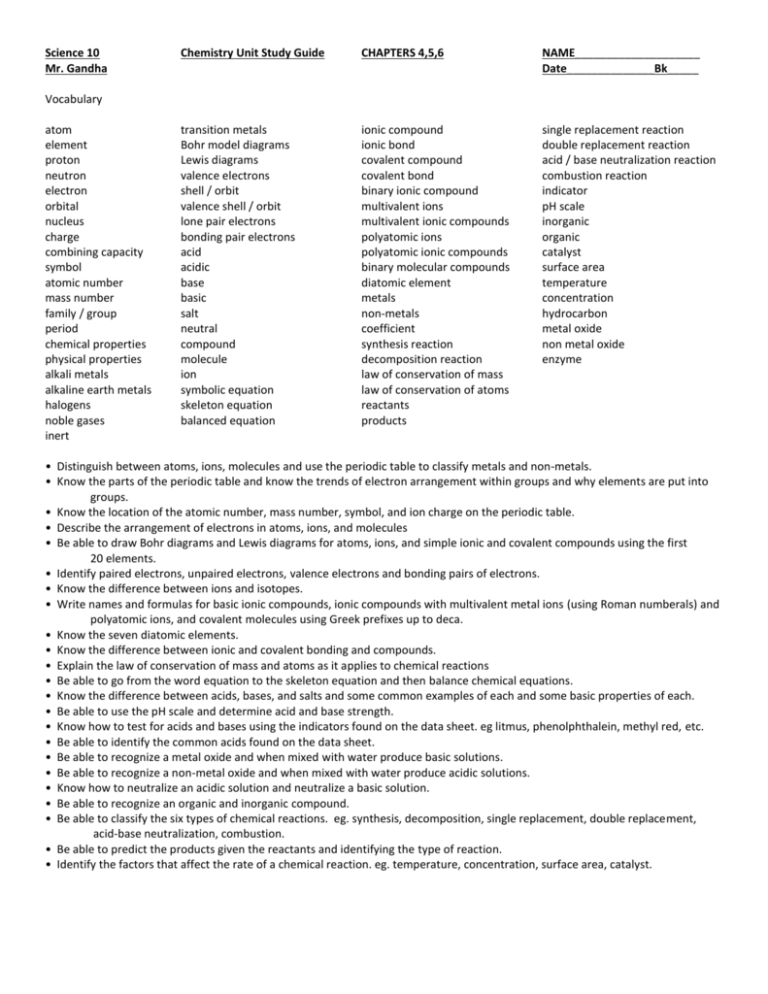
Science 10 Mr. Gandha Chemistry Unit Study Guide CHAPTERS 4,5,6 NAME____________________ Date______________Bk_____ transition metals Bohr model diagrams Lewis diagrams valence electrons shell / orbit valence shell / orbit lone pair electrons bonding pair electrons acid acidic base basic salt neutral compound molecule ion symbolic equation skeleton equation balanced equation ionic compound ionic bond covalent compound covalent bond binary ionic compound multivalent ions multivalent ionic compounds polyatomic ions polyatomic ionic compounds binary molecular compounds diatomic element metals non-metals coefficient synthesis reaction decomposition reaction law of conservation of mass law of conservation of atoms reactants products single replacement reaction double replacement reaction acid / base neutralization reaction combustion reaction indicator pH scale inorganic organic catalyst surface area temperature concentration hydrocarbon metal oxide non metal oxide enzyme Vocabulary atom element proton neutron electron orbital nucleus charge combining capacity symbol atomic number mass number family / group period chemical properties physical properties alkali metals alkaline earth metals halogens noble gases inert • Distinguish between atoms, ions, molecules and use the periodic table to classify metals and non-metals. • Know the parts of the periodic table and know the trends of electron arrangement within groups and why elements are put into groups. • Know the location of the atomic number, mass number, symbol, and ion charge on the periodic table. • Describe the arrangement of electrons in atoms, ions, and molecules • Be able to draw Bohr diagrams and Lewis diagrams for atoms, ions, and simple ionic and covalent compounds using the first 20 elements. • Identify paired electrons, unpaired electrons, valence electrons and bonding pairs of electrons. • Know the difference between ions and isotopes. • Write names and formulas for basic ionic compounds, ionic compounds with multivalent metal ions (using Roman numberals) and polyatomic ions, and covalent molecules using Greek prefixes up to deca. • Know the seven diatomic elements. • Know the difference between ionic and covalent bonding and compounds. • Explain the law of conservation of mass and atoms as it applies to chemical reactions • Be able to go from the word equation to the skeleton equation and then balance chemical equations. • Know the difference between acids, bases, and salts and some common examples of each and some basic properties of each. • Be able to use the pH scale and determine acid and base strength. • Know how to test for acids and bases using the indicators found on the data sheet. eg litmus, phenolphthalein, methyl red, etc. • Be able to identify the common acids found on the data sheet. • Be able to recognize a metal oxide and when mixed with water produce basic solutions. • Be able to recognize a non-metal oxide and when mixed with water produce acidic solutions. • Know how to neutralize an acidic solution and neutralize a basic solution. • Be able to recognize an organic and inorganic compound. • Be able to classify the six types of chemical reactions. eg. synthesis, decomposition, single replacement, double replacement, acid-base neutralization, combustion. • Be able to predict the products given the reactants and identifying the type of reaction. • Identify the factors that affect the rate of a chemical reaction. eg. temperature, concentration, surface area, catalyst.
